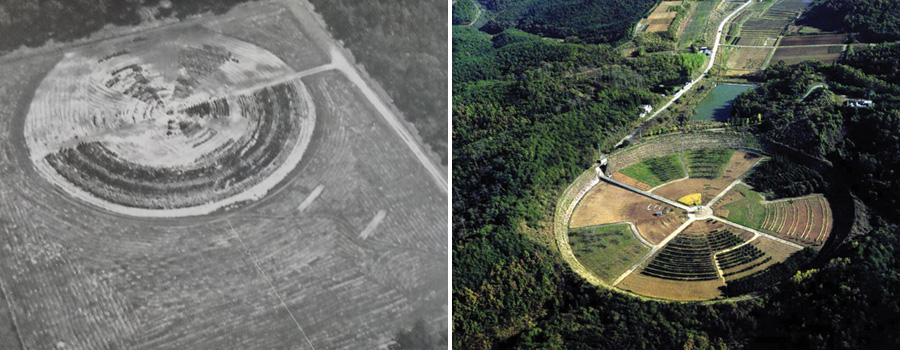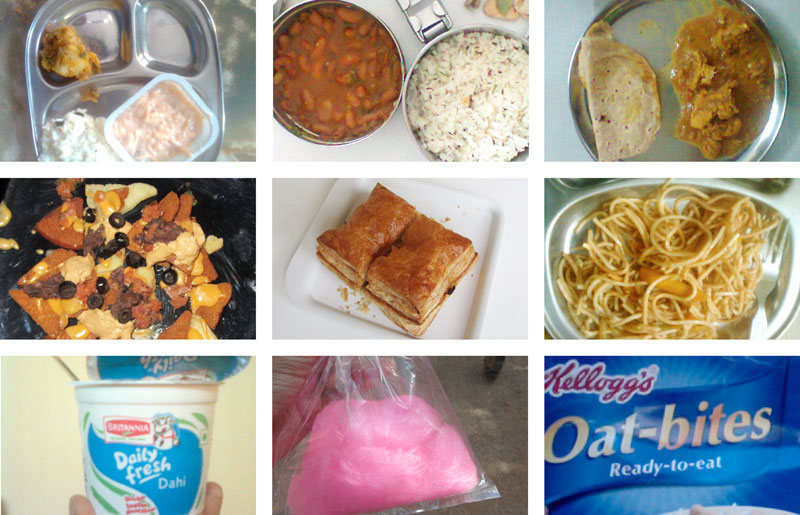
INTRODUCTION
The radiation breeding of seeds using radio isotopes has been practiced for less than 100 years. Although this research began in the 1920’s, there was a concerted effort to find ‘peaceful’ uses for atomic energy, after World War 2. Some nuclear scientists hoped that radiation breeding would contribute towards global food security and decreased hunger.

Atoms For Peace symbol used by the United States Atomic Energy Commission on a document cover page in 1955. It was mounted over the door to the American swimming pool reactor building during the 1955 International Conference on the Peaceful Uses of Atomic Energy in Geneva. Around a representation of an atom are symbolised four areas civil atomic energy: scientific research, medicine, industry, agriculture. Two olive branches symbolise peaceful use. (wikipedia)
The Atoms for Peace symbol from 1955 includes a bushel of wheat on the left, symbolizing the potential non-military application of the atomic program in agriculture. However, the cultivars created through radiation breeding programs have not met the hype of early advocates. Cultivars such as the KinnowLS Mandarin Orange are still being created and released today, but radiation breeding has not had the radical effect on agricultural systems that was predicted, especially when compared to the green revolution or the emergence and battle over genetically engineered crops.
GAMMA GARDENS IN ACTION
Paige Johnson, nanotechnologist and blogger at Garden History Girl has been researching early radiation breeding research, especially Gamma Gardens.
Gamma gardens are test facilities where plants are exposed to radiation, in order to generate a range of unpredictable mutations, more quickly than would happen due to non-radiated environmental exposure.

Left: A gamma garden at Brookhaven National Labs, New York, c. 1958; image provided by Paige Johnson. Right: For a clearer view, a modern-day gamma garden at the Institute of Radiation Breeding, Hitachiohmiya, Japan; photo courtesy of the institute.(via)
These gardens are set up as circular fields where crops closest to the center are completely mutated while smaller doses and less mutation happens at the edge of the circle. These gardens were bordered by protective shielding dikes which were erected to contain the radiation and limited the exposure to living things outside of the dikes. In Japan these fields had to be at least one kilometre away from the nearest residential areas. A gamma source of either Cobalt- 60 or Caesium-137 was placed at the centre of the field and the plants were exposed different doses of gamma rays for 7 – 8 months. In A. M. van Harten’s Mutation breeding: theory and practical applications Caesium-137 is recommended for agricultural use because it has the “relatively” short half-life of 33 years.
However, this procedure can be carried out in growing chambers or even greenhouses. For long terms growth trials exposure is carried on for months and can be given in specifically prescribed doses.
The most obvious question is- would ingesting plants of these seeds harm us in any way? Could the mutations cause known allergens to be present or have other genotypical changes that would be agronomically interesting, but otherwise harmful to an human eater’s health? Our environment already emits some amounts of radiation, in what ways is directed mutagenesis useful or dangerous in the long run? What is the aggregate effect on agricultural biodiversity?
Contemporary writers and journalists are increasingly interested in this topic, but the history of the science and these experiments is still being reassembled and evaluated especially in relation to other human health, food system and environmental concerns.
CAESIUM 137: THE DOUBLE AGENT
Earlier this year the earthquake in Japan resulted in a fall out in the nuclear plant at Fukushima releasing dangerous amounts of Caesium-137 amongst other isotopes. The agricultural lands in the vicinity absorbed this substance and were so contaminated that in many areas people were forbidden to plant rice.
Ironically it’s the very same isotope used for irradiation and mutagenic breeding.

Graph of radiation release from the Fukushima I Nuclear Power Plant following the 2011 TÅhoku earthquake and tsunami, compared to historic events and standards. Updated to show time series geographical effects, local site map, and news reporting. See http://www.rchoetzlein.com/theory/?p=171 for additional discussion and commentary on this image.
Resources:
1) Mutation breeding: theory and practical applications By A. M. van Harten
2) Symposium on Mutation and Plant Breeding By National Academy of Sciences. Agricultural Board
3) http://pruned.blogspot.com/2011/04/atomic-gardens.html
FoodLab Bangalore – is a 3 week workshop the Center for Genomic Gastronomy conducted with sophomores from the Srishti School of Art, Design & Technology in the fall of 2011. Students will examine innovation and conservation in South Asian food cultures, building on recent research of the Center (utopian cuisines, mutagenic meals) and working towards the next edition of the Planetary Sculpture Supper Club to be held in Bangalore on Nov. 12th.
Follow the conversation all week here on our Blog, join in the comments and use the twitter hashtag #foodlabbangalore to keep up to date.













